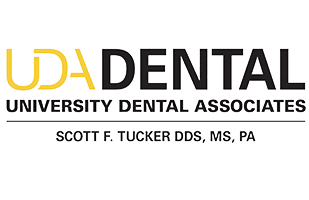Periodontal (Gum) Disease
Periodontal or gum disease can harm the bone and surrounding tissues of the teeth. Gingivitis is the initial stage of gum disease. If treated at this stage, gum disease can often be prevented and possibly reversed. If not treated, it can lead to periodontitis, which can damage the gums, bones and other structures that support the teeth, causing tooth loss.
Risk factors of periodontal disease include:
- Poor dental hygiene
- Smoking or chewing tobacco
- Poor nutrition
- High levels of stress
- Diabetes
- Down Syndrome
- AIDS
- Certain medications including steroids, oral contraceptives or blood pressure medication
- Fillings or crowns with deep grooves or poor contouring
- Genetics: Children who have parents with periodontitis are 12 times more likely to have the bacteria that can lead to periodontal disease.
Warning signs of gum disease:
- Red, swollen or tender gums
- Gums that bleed easily
- Gums that have pulled away from the teeth
- Persistent bad breath or bad taste
- Teeth that are loose, separating or changing position
- Any change in the way your teeth fit together when you bite
- Any change in the fit of partial dentures
Unfortunately, these signs and symptoms may not be easily recognizable by the patient until the disease has already reached a severe or advanced level. Professional evaluation is critical to early detection and treatment.
Diagnosis
A periodontal examination is a fundamental part of all dental examinations and is the first step in ensuring healthy gums. We will fully examine your mouth for signs of the disease.
Treatments
Gum disease can be treated by a general dentist or a periodontist, a specialist who undergoes additional training after obtaining a dental license. If your dentist/periodontist discovers gum disease, we can provide treatment for every stage of the condition, which may include:
- Prophylaxis (teeth cleaning) – In its early stages, many cases of gum disease can be reversed using a simple cleaning procedure with a dental hygienist.
- Scaling and root plane – A more advanced version of a gum cleaning, a scale and root plane procedure involves deeply cleaning under the gums and planing the surface of the root to remove toxic elements and bacteria and help the body eliminate the gum infection.
- Gum surgery – In more advanced cases of gum disease, we may recommend gum surgery in conjunction with regenerative procedures in order to eliminate the disease and help restore lost tissues.
- Bone grafting – In the most advanced cases of gum disease, bone is lost around the teeth, leading to mobility and eventual tooth loss. We may recommend a bone grafting procedure in addition to one or more of the gum treatments above to regenerate the level of bone and stabilize health.
Gum Disease and Other Health Conditions
Research is increasingly showing a strong connection between gum disease and certain medical conditions. Gum disease has been linked to an increased risk of heart disease, diabetes, cancer, premature birth and low birth-weight babies. Maintaining healthy teeth and gums has been shown to lower your risk for many of these and other serious medical conditions. The sooner you make the Mouth Body Connection, the healthier you can be.


























